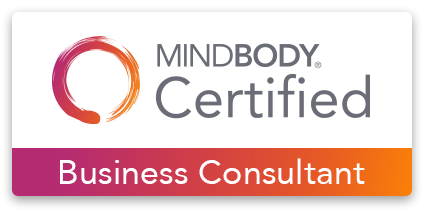There are a great deal of decisions to make when starting a new business. But one of the most important decisions – one that’s not always easy – is choosing which business entity is right for your particular business.
The business entity you choose affects how you report your income, when and how you pay taxes, and even how you pay yourself from the business.

Sure, you can find plenty of definitions of business entities with a quick Google search, but definitions don’t paint the full picture. Today, we’ll explore the C-Corporation business entity and walk you through how that business entity affects the owners of an e-commerce bakery.
Forming a C-Corporation
In our previous posts on business entities, we learned about Jane and Michael and their online bakery business. As their business changed, they went from a partnership to an S-Corporation. Through this process, they learned firsthand that the business entity they selected had a tremendous impact on how they paid themselves and how they were taxed.
After a few years of operating as an S-Corporation, one of the bakery’s biggest customers reached out to Jane and Michael about investing in the business. This customer loved the product and wanted to help them expand their online reach. There was only one problem – the customer wanted to be an investor through their corporation, and S-Corporations are not allowed to have shareholders that are corporations.
After lengthy discussions with their attorney and their tax advisor, Jane and Michael agreed that bringing on this new investor was the right choice for their business. To make this possible, they decided to revoke their S-election and convert the business into a C-Corporation.
Reporting the Income
The tax returns for a C-Corporation (Form 1120) look very similar to the tax returns of an S-Corporation. The revenue and expenses are listed and used to calculate the year’s profit. The one big difference is that, instead of reporting that profit to the business owners on a K-1, a C-Corporation calculates and pays its own taxes on the profit.
After revoking their S-election and converting to a C-Corporation, Jane and Michael accept $50,000 from their new investor in exchange for 33% of their company. They use that money to rebuild their website and stock up on inventory anticipating an influx of new customers. Their new website is a success, and they end the year with $150,000 in profit.
With their old business structure, Jane and Michael would have reported this profit on their personal tax returns and paid the required taxes. But with the new structure, the tax on the $150,000 profit is calculated on the C-Corporation tax return. Assuming a 21% corporate tax rate, the business would pay $31,500 in taxes on this income.
Paying Themselves
Since Jane and Michael continue to work in the business, they continue to receive a salary for their efforts. These wages are deducted by the business as an expense and are reported to Jane and Michael on a W-2 at the end of the year. Their new investor doesn’t do any work, so she doesn’t receive any wages.
After earning $150,000 in profit in their first year as a C-Corporation and paying the $31,500 in taxes, the business owners decide they want to distribute some of that excess profit. They want to keep some of the money in the business for future growth, but agree to pay each owner $25,000. Since the business is now a C-Corporation, this distribution to the owners of the business is classified as a dividend.
Dividend payments are reported to the business owners at the end of the year on a Form 1099-DIV. The business owners then have to report these dividends on their personal tax return. They are not a deduction for the business, so they don’t reduce the taxable income for the business. They are a distribution of profit.
Paying the Taxes
For the first time, the business has its own taxes to pay. Depending on the tax amount, the business may be required to make quarterly estimated tax payments during the year. The payment for these taxes comes from the business bank account.
Jane and Michael continue to report their W-2 wages on their personal return, and they have set up their paychecks to have taxes withheld and paid through payroll.
Now they have the dividend income to report on their personal returns as well. They can make separate payments to cover the taxes on the dividend income, or they can increase their payroll withholdings.
You might have noticed that the business is paying taxes on the profit and then the owners are paying taxes when the profit is distributed to them. This is often referred to as “double taxation” – one of the biggest drawbacks of a C-Corporation structure.
Luckily, the tax rate for dividends on personal returns of the owners is usually lower than their regular tax rate. The corporate tax can also be lower than the business owners’ personal tax rate. For example, the dividend tax rate could be 15%, the corporate tax rate could be 21%, and the owners’ regular tax rate could be 40%. Under this scenario, the taxes might be lower under the C-Corporate structure.
It’s important for any business owner to work closely with a tax advisor. But the complexities of a C-Corporation make it even more crucial to plan ahead and get good advice.
Bottom Line
C-Corporations have unique qualities compared to other business entities. And like virtually everything in life, there are pros and cons. On the positive side, there is no limit on the number of owners or “shareholders” allowed, and no restriction on corporations being shareholders.
C-Corps also provide protection for business owners’ personal assets, in the case of problems like lawsuits or bankruptcy. One downside of C-Corporations, as we mentioned, is that pesky double taxation. While double taxation won’t always result in a higher amount of taxes due in the long run, it’s something to consider carefully with the help of a tax professional.
Other challenges for C-Corps include the requirement of a board of directors, and ongoing filing and fee requirements. Stay tuned for the final installment of our business entity series. In case you missed our previous business entity articles:
Business entity series part 1: sole proprietor
Business entity series part 2: partnership
Business entity series part 3: S-Corporation








